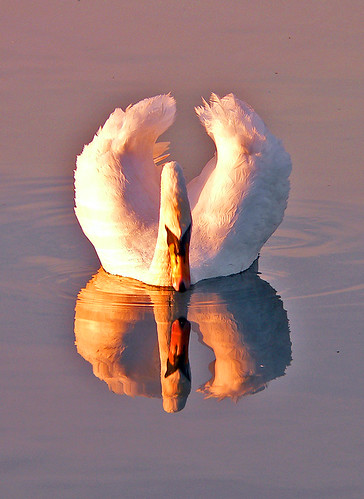Note from the blog moderator: This guest post is by Vilna Bashi Treitler.
Are you struggling with choosing a dissertation topic?
Choosing a topic can be one of the most important choices you will make in your professional career because it determines the first major piece of research for which you’ll be known, provides a focus for the group of professors you wish to solicit for your dissertation committee, and it is the first thing (along with the text of your letters of recommendation) that future colleagues will scrutinize when considering you for a job in their department.
The bad news is that all this can make choosing a dissertation topic pretty overwhelming. The good news is that I try to make the process somewhat easier by explaining to you how you might get started and avoid certain pitfalls. I have four pieces of advice to offer that I hope you follow, plus a tidbit that is not mandatory.
First, “push the envelope.”
You’ve probably heard a gazillion times that new research should “push the envelope,” but I’d bet that the likelihood that you had a clear explanation of what that means has not been given to you. Well, I’m going to explain it, right here, right now.
It is a phrase with a mathematical reference. An envelope is a term for the curve that encloses all other curves in a family of curves. When the term was used in aeronautics, it referred to the outer curve describing the limit of an aircraft’s performance. Test pilots were encouraged to push the envelope in order to test the aircraft, and the phrase made it to the common lexicon in Tom Wolfe’s 1979 book about test pilots, The Right Stuff. (Thanks, for the info, Michael Quinion, at
http://www.worldwidewords.org/qa/qa-pus1.htm!)
Envision the whole of sociological knowledge as contained in one big dataset, complete with keywords and subject headings. Surely, you would contribute something to the dataset that would ostensibly fit under a subject heading, and possibly a set of existing keywords, but to push the envelope your topic should meet three criteria.
- It doesn’t repeat something that’s already in that dataset.
- It is something that sociologists interested in the topic will want to read when searching on information on the topic. That is, your research is not just different from the other work on the issue, but also has an interesting take.
- It is research that actually teaches researchers in your area of interest new information and will be useful to them when they are framing their own research projects. That is, not only is your research interesting, it shouldn’t be ignored if other sociologists want to do research in the same areas.
Honestly, you need only come up with a question that, when answered, would shed new light on what others have done before – but the idea is for that new light to truly have us look at things in a whole new way.
Second, ensure that your methods are matched to the theory you employ and vice versa.
I will give you an example from my own work that also illuminates the “pushing the envelope” idea. In graduate school, I studied international migration from both demographic and sociological perspectives. Most of the time, these were done with quantitative methods. That means that people used formulas to speculate about the ways migrants and potential migrants behaved, and they considered themselves to be right when their measures of statistical significance said that the research was onto something. But having lived with immigrants my whole life, I knew that there was more to their behavior that was not captured by the existing quantitative models. I also believed that to truly know what people are actually doing, one could and should just ask them! So I set about asking people about their migration history and experiences, and did this in several countries, in the hopes of tracing out how they actually formed their networks, and what these networks did to help the people included. So, my keywords were “migration,” and “networks,” but since my goal was to find out what migrants actually did, I had to use interviews. Since the networks crossed national borders, I had to do transnational interviewing. Since I had developed my theory from my own experience with immigrants, there was a bit of participant observation thrown in. And since I was asking about the migration experience – which could cover a whole lifetime of movement, job seeking, sending remittances, etc. – I really was also doing oral history. I had to do the methods it took to make the story complete and coherent. It didn’t matter (or shouldn’t) that (at that time) people didn’t normally do qualitative work in demography. That was my task because that my research question required it. But it also pushed the envelope, because it “unlocked the black box” that was the migration network, something that people had written a lot about, but never had explained neither what it was nor how it worked.
Perhaps you decide that (for example) you lack too much skill to try a certain type of method (either quantitative or qualitative) – if so, then ensure that you ask a question that can be answered by the method you choose. You can’t do ethnography and expect to answer a question like “With what frequency do the people with characteristic X take on behavior Y?” because ethnographies are not the best method for counting people’s activities and making predictions about behavior. Similarly, quantitative methods might not be the best to answer questions about how a particular group process evolves over time or why feelings about something changed between one generation and the next.
Develop your theory and methods together and you’ll have a much easier time of it! Choose a theoretical frame for what you wish to interrogate, and your methods will have to correspond. And know that particular methods answer only certain kinds of questions, and frame your question according to the method you choose.
As a side note: know that quantitative methods are nearly always required of graduate students, but not so with qualitative methods. Do yourself a favor and take a qualitative methods class anyway – then you have in your research toolkit the facility to answer perhaps any question you might think of, for the rest of your career!
Third, one's question should never be a question that can be answered with a "yes" or "no."
Let me give an example that might resonate with you. Say your interest is in the whole idea of the “post-racial” U.S. Say, too, that you think that post-racial is a stand-in for racial openness (as opposed to a kind of “colorblindness” that professes to ignore race altogether). So you pose this question: “Do people who have friends of various races (e.g., neither are their friends as a group all white nor all black) call themselves post-racial?” And let’s say the answer is yes. Okay, is that answer surprising? Maybe you have a dissertation that speaks to how some people define “post-racial” but it doesn’t sound like a terribly exciting one, and that answer surely doesn’t push the envelope. But worse, let’s say the answer is no. Um, then you have no dissertation at all. You have a hypothesis that you spent a whole lot of time researching, but then you have nothing to show for it.
The solution is to never pose a yes/no dissertation question. Instead, how about these dissertations?
- Twenty-First Century Streetwise: The Post-Racial Redux. An empirical analysis of the way people on the street understand us to be currently living in a post-racial moment, and an understanding of what dissenters (those who think post-racialism is bunk) have to say about the state of racial affairs in 21st Century USA.
- Guess Who’s Coming to Dinner and Sleeping Over Too? A comparative ethnography of contemporary urban cross-racial friendships in three US cities.
- Post-racialism: A view from the Mid-West. How relevant is post-racialism to North Americans far from urban centers? How do post-racial moments occur in rural America?
- New Views on How the Young Live Diversity. A quantitative network analysis of cross-racial and ethnic friendship networks among young people in the middle school years. (This is significant because racial differentiation, and the cliques that develop with that consciousness, tend to begin in the middle school years. If we’re really in a post-racial moment, should it not be the young people who will best demonstrate that through their own behavior?)
I’m sure you see the differences here. There’s no “yes” or “no” that can answer these questions. Best of all, no matter what the research working on these latter three questions finds he or she will still have a real dissertation once the research is complete.
Fourth, and last, some research questions are just bad ones.
You’ve thought through all the theory and studied the work of those who toiled before you. Now it’s time to write your dissertation proposal and your justification for undertaking your research. Here’s a big hint that you’ve not got a good question: your ONLY justification for taking on this project is that “no one has looked at this before.” You’ve got to have a better reason than that (and it should be one that “pushes the envelope, remember?). There are plenty of questions that haven’t been answered before now. Some of them just should not be answered! The question of whether black and Latino people who drink coffee from Starbucks are better parents than those parents who drink Dunkin’ Donuts coffee might be useful for the Starbucks Corporation to know, but that doesn’t make it a great dissertation. “But it hasn’t been done!” Um, no, and let’s hope it stays that way.
After you’ve done the work of envelope-pushing, theory/methods matching and yes/no vetting to find a dissertation topic, you’ll be in good stead. But then make sure you know the existing literature well enough and are engaged with it well enough that you have more to say than “…but these scholars have never addressed the question of [insert your dissertation topic here].”
Fifth (and this is the tidbit), make it “sexy.”
Sexy research projects well carried out tend to merit a better academic job. But what’s a sexy topic? Aaah, that’s the million dollar question.
Sexy topics are those that make people say, “Wow, now that’s interesting! I hadn’t thought of it that way before!” Sexy topics are new twists on old issues that make people sit up and take interest. Think of many of your academic idols, or those at the top of the business, and what idea put them on the map, and chances are it was a sexy topic. (I’m not saying we’re in a meritocratic system – not all good projects are rewarded, and surely some bad ones are – but you get the idea.)
Sexy is more than pushing the envelope. Pushing the envelope is required, but sexiness is not. Many a PhD is earned without having met the condition of sexy dissertation. PhDs go to people who have done their work, whether the work was sexy or not! But sexy is a great thing to have in your pocket, and sexy topics look especially good in job application cover letters!



